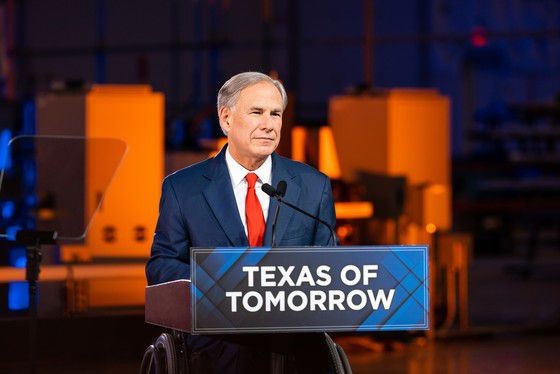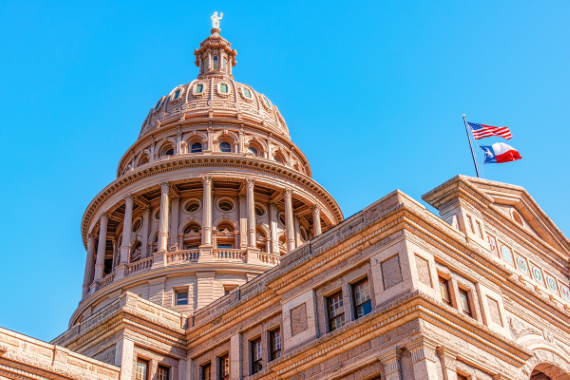HOU in ATX: Legislative Update – Week 6
Published Feb 17, 2023 by Hannah Cobb
This week, Gov. Abbott delivers State of the State address, announcing his emergency items, Senate Finance holds Natural Resources hearings, Lt. Gov Patrick releases top priorities, and House Appropriations held its first hearings.
Governor Abbott Delivers State of the State, Announces Emergency Items
Thursday evening, Governor Abbott delivered his biennial State of the State address at a manufacturing facility in San Marcos, sharing his legislative priorities for the 88th session. Typically held in the Texas House Chamber, it is the second time Abbott delivered his speech outside the Capitol complex.
In his speech, Abbott announced a list of seven emergency items:
- Cutting property taxes
- Ending COVID-19 restrictions forever
- Education freedom for all Texans
- School safety
- Ending "revolving door" bail
- Securing the border
- Fighting the fentanyl crisis
Some highlights: The Governor’s speech also mentioned three of the Partnership’s top executive priorities.
- Economic Development Incentives: Gov. Abbott conveyed support for strategic economic development tools in keeping Texas an attractive state for business. He stated the need for a new economic tool this session for the benefit of local communities.
- Flood Mitigation: Gov. Abbott alluded to a proposed plan to spend $100 billion on transportation infrastructure, which would likely include flood mitigation advantages.
- Higher & Public Education: Gov. Abbott expressed support for school choice, school safety, and investments in community colleges.
Why it matters: The Governor’s designation of these seven emergency items allows the Legislature to immediately begin taking up legislation on these issues.
Senate Finance: Article VI, Natural Resources
What’s new: This week, the Senate Finance Committee held a hearing on Article VI, the natural resources section of the budget. The General Land Office (GLO), Gulf Coast Protection District (GCPD), and Texas Water Development Board (TWDB) all testified.
- GLO described the different sources of federal resiliency funds and the need for state matching dollars.
- GCPD explained the federal design process of the Coastal Texas Program gates in response to a local news article.
- TWDB asked to replenish the Flood Infrastructure Fund (FIF) and for more staff to assist with implementation.
Go deeper: During the hearing, Senator Brandon Creighton (R-Conroe) emphasized the need to increase the amount of funding in the FIF to address the flood mitigation needs of communities across the state.
Houston in Focus: The Partnership submitted a letter to to the committee emphasizing the need for reinvestment in the Flood Infrastructure Fund.
Lt. Governor Releases List of Priority Issues
On Monday, Lt. Governor Patrick announced his list of 30 priority bills for this legislative session.
Go deeper: Several priorities laid out by the Lt. Governor align with issues important to the business community, including issues relating to taxes, energy transition, flood mitigation, and higher education.
- Business Property Tax Exemption (SB 5): Texas is one of only nine states with a business inventory tax, which can be a hinderance for economic development opportunities. Narrow exemptions for business personal property taxes can increase our ability to compete for future large-scale projects.
- Addressing Texas’ Future Water Needs (SB 28): Texas is growing rapidly, meanwhile, the state’s population will continue to face increasingly severe weather events. Water infrastructure, including flood mitigation and drinking and wastewater projects are major priorities for state leaders to consider.
- Health Care Workforce Shortages (SB 25): Many of the workforce shortages in the health care industry predate COVID-19, however it is increasingly difficult to recruit and retain health care workers, particularly nurses. The Lt. Governor is showing a commitment to addressing health care labor shortages by using state resources to reduce the overall burden of entering the nursing field in creating new scholarships for registered nurses.
- Priorities relating to Higher & Public Education: Lt. Governor Patrick’s priorities signal a heightened focus on public and higher education. Several of the priorities are broadly supported, including the creation of a new university endowment, improving teacher pay and retention, and increasing school safety resources.
The Lt. Governor released the full list of his priority bills on his website.
House Appropriations Kicks Off Budget Hearings
The House Appropriations Committee met this week to begin its budget discussions, starting off with a look at the state’s health and infrastructure investments. Agencies and regional stakeholders testified on the critical nature of many of these programs, including the postpartum Medicaid program, behavioral and mental health, and transportation, water, and flood mitigation funding.
- Postpartum Medicaid Coverage for New Mothers: Last session, the legislature extended postpartum Medicaid coverage from 60 days to 6 months but fell short of the recommend 12-month coverage. Texas has one of the highest maternal mortality rates and extending postpartum coverage is one way to help new mothers obtain the life-saving medical care they need. This week, the committee explored the impact of extending postpartum coverage for the full 12 months.
- Behavioral and Mental Health: There has been a significant rise in behavioral and mental health challenges since the onset of the COVID-19 pandemic. To address these needs, the state has increased its investments in mental health resources and efforts to attract professionals to the field. Additionally, the committee explored ways the state can further invest in mental health resources, particularly focusing on public school and student needs.
- Flood Mitigation Funding: Flooding mitigation is a top priority for many in the legislature and the Texas Water Development Board (TWDB) is pursuing the replenishment of the Flood Infrastructure Fund (FIF) and additional staff for implementation. The state-wide need for flood mitigation projects is estimated to be $42 billion. Concurrently, the Gulf Coast Protection District (GCPD) is seeking the required state matching funds the coastal barrier project.
House Appropriations Chairman Greg Bonnen also announced the appropriations subcommittee chairs and membership.
During the 88th Legislative Session, the Greater Houston Partnership will provide a weekly update on newsworthy items from Austin. You can view more policy news and archives of our weekly updates here.
 The Houston Report
The Houston Report




















